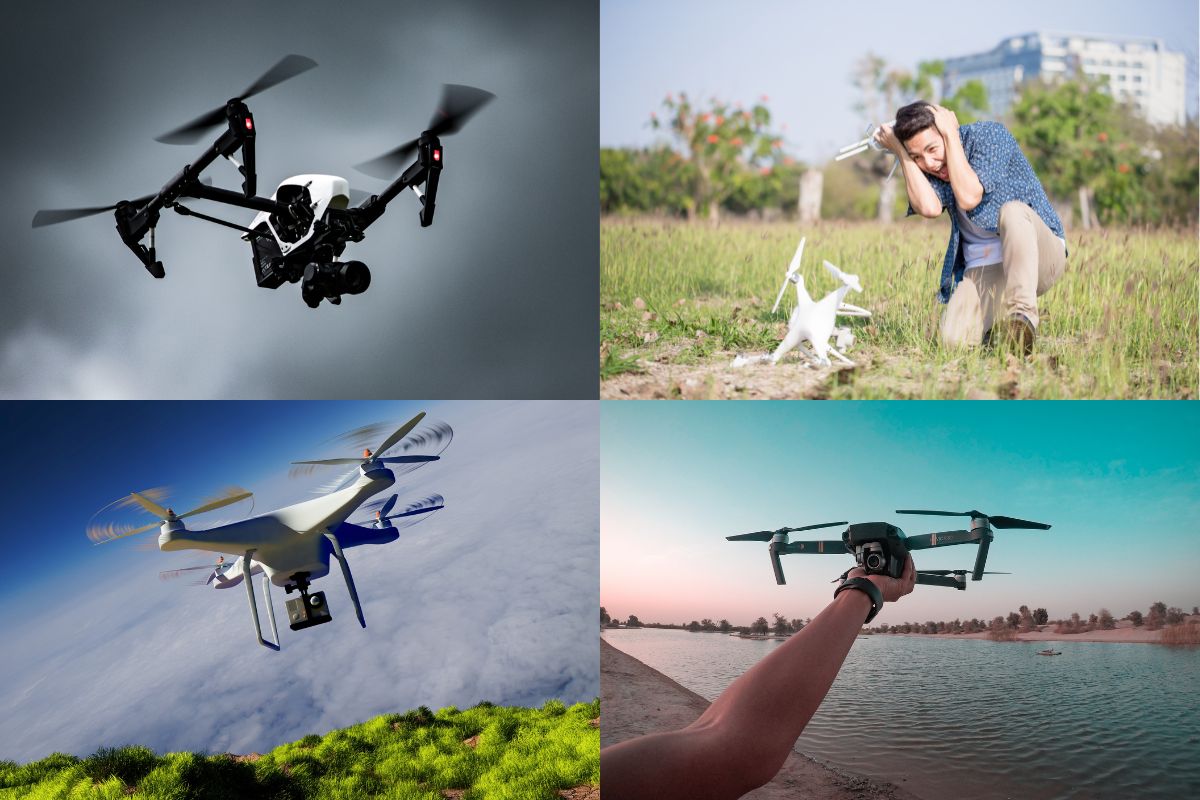Are Drones a Growing Threat? Research Uncovers Safety and Liability Concerns

A newly released investigation by Scott Vicknair Injury Lawyers has shed light on the growing concerns surrounding drones safety and their impact on public safety. As the United States witnesses drone registrations exceeding 1 million in 2025, questions about accountability, safety measures, and effective regulation have moved to the forefront of aviation discussions.
According to the firm’s findings, multirotor drone models account for roughly 70% of all reported incidents, with the majority of drone accidents occurring between the hours of 10 AM and 10 PM. The study documents various injuries resulting from drone mishaps, particularly lacerations, cranial trauma, and eye damage—typically caused by falling equipment or exposed propellers. Among the most alarming cases highlighted was that of a toddler who suffered an eye injury after being struck by an airborne drone, underscoring the importance of drone safety and potential dangers when these devices are operated without adequate precautions.
Table of Contents
ToggleRegulatory Evolution Over Two Decades
The landscape of drone regulation has transformed dramatically since civilian use was first permitted. When the Federal Aviation Administration initially authorized non-military drone operations in 2006, guidelines were sparse and public concerns minimal. The explosive growth in both recreational and commercial applications soon necessitated more comprehensive oversight, leading the FAA to establish a national registration system for unmanned aerial vehicles by 2015.
Today’s drones serve essential functions across numerous industries, including agricultural monitoring, construction site assessment, infrastructure examination, media coverage, and law enforcement support. While these applications deliver significant benefits, they simultaneously introduce complex risk factors that make compliance with regulations increasingly important.
Operators must navigate intricate airspace restrictions, maintain appropriate certifications, and exercise continuous control over their aircraft. Non-compliance can result in civil litigation, criminal charges, and potentially trigger more restrictive industry-wide regulations. The report also highlights incidents where drones have disrupted critical emergency operations, such as firefighting efforts and search and rescue missions, demonstrating how irresponsible operation affects broader public safety concerns.
Technological Innovations Enhancing Aviation Safety
Fortunately, technological advancements are addressing many safety challenges associated with drones operations. The market for anti-collision drone systems – valued at $1.5 billion in 2022 – is projected to reach $4.7 billion by 2030. These technologies aim to prevent both airborne collisions and ground accidents, improving safety for both the devices and surrounding individuals.
Key developments driving this safety revolution include:
- Sophisticated obstacle detection and avoidance systems utilizing advanced sensor arrays
- Geographic restriction capabilities that prevent drones from entering prohibited airspace
- Automated emergency landing functions for situations where control signals are compromised
- Artificial intelligence navigation systems enhancing real-time decision-making capabilities
- Comprehensive traffic management frameworks coordinating multiple drone movements in shared airspace
These advancements not only reduce accident potential but also facilitate broader adoption of drone technology in sensitive applications such as package delivery services and urban infrastructure monitoring.
The Imperative for Proactive Drones Safety Measures
“This comprehensive analysis highlights the urgent necessity for enhanced safety protocols and strict regulatory adherence to prevent drones-related incidents,” stated a representative from Scott Vicknair Injury Lawyers.
“The evidence clearly demonstrates that following industry best practices significantly reduces both injury occurrence and legal exposure, creating a safer environment for all airspace users.”
Comprehensive education initiatives, rigorous training requirements, and unwavering emphasis on safety protocols must become standard across the entire spectrum of drone operation—from casual enthusiasts to professional pilots. Programs promoting proper certification, public awareness campaigns regarding safe operation practices, and strengthened penalties for reckless behavior represent essential steps toward minimizing accident potential.
Forging a Path Toward Safer Aerial Operations
As drone technology continues its rapid advancement, collaboration between regulatory authorities, industry leaders, and drones operators remains crucial for establishing a secure aviation ecosystem. Strengthening monitoring mechanisms, expanding educational outreach, and implementing more effective enforcement strategies are necessary to ensure responsible drone operation.
Proactive measures implemented today will help build public confidence in unmanned aerial technology, ensuring these innovations deliver their intended benefits while minimizing unintended consequences. By prioritizing safety standards and accountability frameworks, the aviation community can embrace the future of drone innovation while protecting individuals and communities throughout the nation.
Integration of Drones in National Airspace
The integration of drones into our national airspace represents both significant opportunity and serious responsibility. Through stringent safety protocols, continuous technological improvement, and thoughtful regulatory frameworks, society can harness the remarkable potential of unmanned aviation while effectively managing inherent risks.
As drone applications continue expanding across sectors and industries, balancing innovation with safety considerations remains paramount. By addressing these challenges proactively, stakeholders across the drone ecosystem can work together to realize the transformative potential of this technology while ensuring it develops in a manner that prioritizes public welfare and safety.
The research serves as a timely reminder that as drone technology becomes increasingly accessible and widespread, the responsibility to operate these devices safely must be shared equally among manufacturers, regulators, and operators. Only through this collaborative approach can we ensure that the benefits of drones technology are realized without compromising public safety or individual well-being.
Published by Chloe Jhonson
With over 5 years of experience in content creation, I specialize in crafting engaging posts across various topics — from fashion, lifestyle, business & tech. Join me as I share insights & ideas to inspire your journey! View more posts
Recent Post
Golf Resorts In Greece – Something’s Changing

Rediscover Luxury and Nature at Hotel Xcaret Mexico

How To Act When Your Check Engine Light Is Flashing





